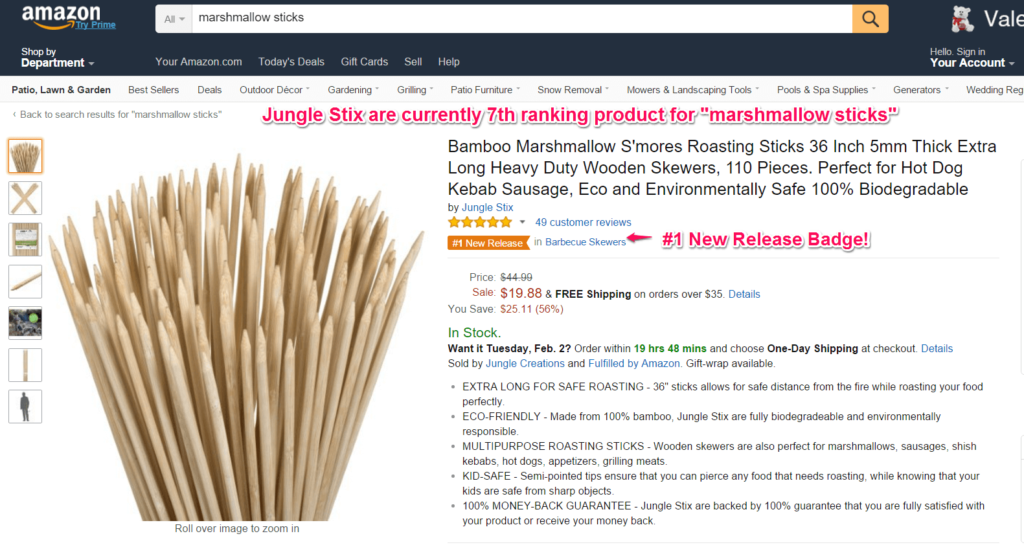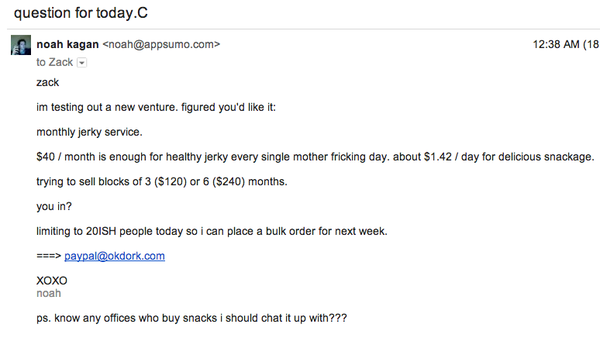I’ve ended up somewhere smelly.
The last couple of years I’ve been teaching people how to make their stores more successful.
Unfortunately that means I’m entering the territory of gurus selling the overnight-6-figure-profit dream or other get rich quick schemes.
Steering clear of this kind of BS is super important to me.
That’s because I want to help people build businesses for the long haul. And you can’t build a decent business by selling shitty products or exploiting loopholes.
Peddling this short term thinking works because making money online is hard.
It requires patience and persistence without knowing exactly when, or even if, you’ll see a return.
But I want to do better than simply tell you it’s though.
That’s why in this post I’m exploring why it so hard to build an ecommerce business from scratch and also give you a couple of ideas to make it a little easier.
What Makes It So Hard To Build An Ecommerce Business?
I was reading John’s story about his journey building a marketplace for marketing agencies and consultants and found the following interesting video by Dan Martell on business growth:
I highly recommend watching the whole video, but if you don’t have 7 minutes to spare, it basically describes the 3 stages of business growth:
- Increase top-line revenue by making sales
- Improve profitability by cutting costs
- Scale up by building out marketing
This is a solid blueprint to build ANY type of business. But in ecommerce, it seems we’re trying to do things backwards.
We start out with a logo, theme, website, social media accounts, email newsletters, retargeting campaigns, etc.
But in the video above, you see that these are things you can do to SCALE the business you already have.
If you’re just starting out and try to do all that work without a healthy, profitable business backing you up, you’re at a huge disadvantage.
That’s because the creation of your marketing machine takes time and money.
Even big companies that have been in business for years need time to figure out their “online stuff”.
So it’s no wonder that a lot of new store owners throw in the towel after 6-12 months of slogging along without any meaningful progress.
Knowing that, let’s take a look at what we can do things different and be more successful with our business.
Step 1: Figure out how to grow top-line revenue
You got into ecommerce because it meant hands-off selling:
Sales roll in while you play with your kids or work your day job.
But if there is no money coming in, or it’s only a small trickle, it’s hard to stay motivated to keep putting in the time and money to keep going.
The solution to is to take control and bring in sales more directly. That mainly boils down to getting in front of your customers.
A couple of ways on how to do that:
Sell on Platforms
Instead of doing to do all of the legwork needed to attract customers to your site and convince them to buy, you can tap into the existing audiences of platforms like Amazon, Jet, eBay or your local variant.
Downsides are that your margins will be razor tight and you’re not building your customer base. But you are bringing in revenue for your new business.
Take a look at how Jungle Scout started (from scratch) and sold about $12,000 of bamboo marshmallow sticks over the course of 2 months.
Events
Take your products where your target customers hang out.
That could be literally anywhere: a local fair, meet-up, match, race, competition or expo. Your options range from paying for a fancy booth, a simple table or the back of your car, your call.
Pick up the phone
Get your potential customers on the phone.
This one works well if you sell to other businesses. Just make sure that your call isn’t just a pitch fest. The more value you can offer, the better your call will be received.
If “providing value” sounds vague, think of how much more you know than the person you’re calling when it comes to buying, using and maintaining your products, and teach them some of that.
Email outreach
Email people that you think would be a good fit for your products.
Don’t make it too long and really try to make it worth their time.
Start emailing the people that you know like friends, family and coworkers. Pitch them and ask them for referrals.
Sumo Jerky sold over $3,000 worth of beef jerky in 24 hours without a shopping cart, custom product shots or Instagram account.
It started with one guy emailing people that he thought would be interested in tasty beef jerky.
One caveat: reaching out is hard for your soul (especially the last 2 ones). That’s mainly because you’re going to hear no most of the time.
When I think back to when I started my consulting business, this was gut wrenching. There were days where I would make 20 calls in a day to businesses that I thought I could help. And at the end of the day I’d have nothing to show for.
No sales. No call-backs. No meetings. Not even a new LinkedIn Connection Request. Nothing.
But when I finally would make a sale I’d instantly forget the shitty parts.
So the best outcome from doing all of the above is that you bring in more revenue.
Worst case is that you’ll spend time with potential customers that tell you why they don’t want to buy and what would have to happen before they want to buy. This can be very valuable.
Step 2: Focus on high ROI marketing activities
Last year I created a huge list with every marketing tactic I could think of.
The tactics that came out on top when it come to generating the best returns were the ones that:
- Captured customers that indicated they wanted to buy (retargeting)
- Targeting people that had already bought (retention via email marketing)
That’s great, but if you’re starting from scratch, these two are not an option.
The next best place to focus your early efforts are on the places where you can find customers that are likely to purchase:
- Search Engine advertising: Google Adwords or Bing
- Comparison shopping engines like Google Shopping
- Affiliate deals with non-competitors that sell to the same audience or partners
- Send out product samples for review
- SEO: create content like reviews or product comparisons
This is our shortlist of where to start.
But your results will still depend on your business and market & the resources you invest in getting good at that particular piece of marketing.
Taking the time to consider if you can bring in more revenue or work on things that have a higher potential return will help you make progress, faster.


